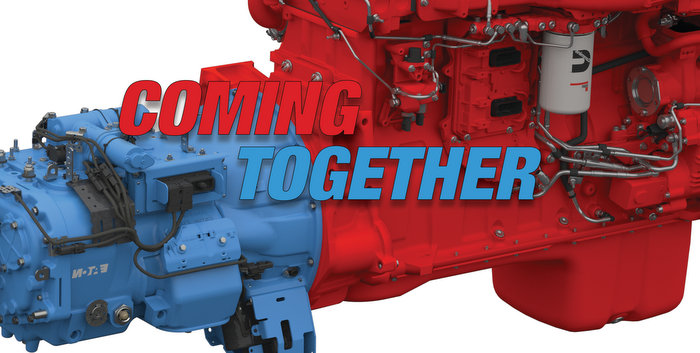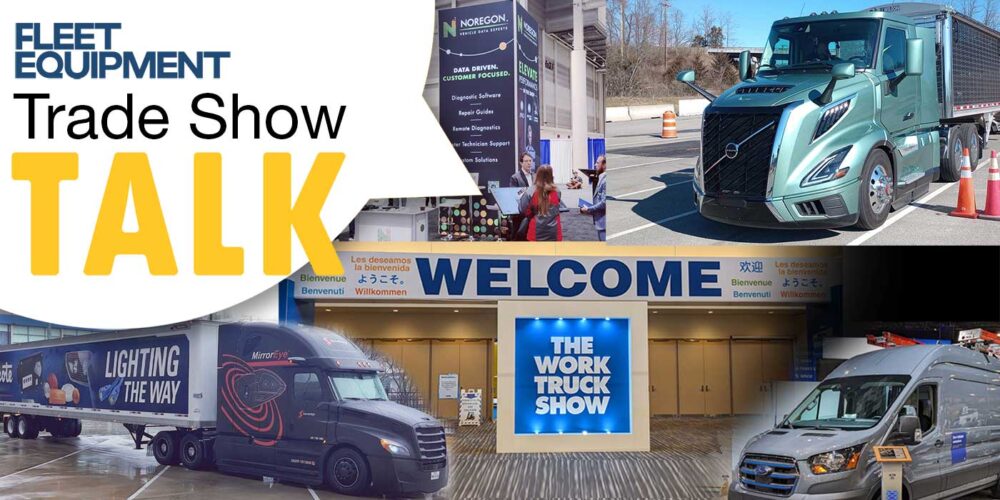In the spring of 2013, Cummins and Eaton took their business partnership to the next level by launching their SmartAdvantage Powertrain package that, today, offers the Cummins ISX15 and ISX12 paired with the Eaton Fuller Advantage 10-Speed automated transmission, touting a 3 to 6% increase in fuel economy. It’s paying off for fleet customers that are putting the powertrain through its paces.
“Bringing together two leaders in their respective markets to selflessly collaborate enabled us to focus solely on doing whatever was necessary to provide the customer with the best possible powertrain,” said On-Highway Marketing Communications Director Mario Sanchez. “The customer was the focus from the onset and our transparent collaboration was paramount in being able to deliver this to the market.”
“While Eaton integrates our products with many engine manufacturers, with Cummins we have moved toward a more deeply integrated approach,” added John Beering, Eaton’s senior vice president and general manager, Commercial Powertrain. “By deepening the degree of information sharing and collaboration, we have been able to unlock far greater levels of fuel economy and operational performance improvements for our customers.”
According to the companies, customer feedback has been and continues to be positive. For example, Kriska Transportation said it went from 6.5 miles per gallon (MPG) to 9.5 MPG. “In their words, ‘Just handing drivers the keys to a new truck, at 1,000 miles a day, that’s a lot of money’,” Beering related. “That is a very powerful comment.”
With how quickly engine and transmission technology continues to evolve, both Cummins and Eaton reported that there is still efficiency to be gained with today’s technology.
“While there are other areas of focus in which to drive improved fuel economy, we believe that there is much more runway to drive fuel economy improvements through the powertrain,” Beering said. “New materials will yield weight savings. Advanced electronics and controls, coupled with telematics that integrate changing road conditions and vehicle system information will further optimize powertrain performance for optimized fuel economy.”
“Technology and integration advancements seen in the SmartAdvantage powertrain have demonstrated the reality for customers to break through the 10 MPG barrier and 45% break thermal efficiency,” Sanchez said. “GHG Phase 2 is a good foundation to enable continued integration of technologies we have demonstrated.”
Speaking of GHG Phase 2, both companies stated that they already have technologies that will help OEMs meet the EPA mandates. The SmartAdvantage and Eaton’s Procision transmission for medium-duty applications are examples of technologies already in the market today that can reduce emissions through improved fuel economy and overall vehicle performance. They aren’t stopping there—both continue to work on future products that will provide even greater levels of improvement in anticipation of future regulations that go deeper than those in the 2017 mandate.
Sanchez outlined three key items that the company sees as some of the potential next technological evolution in terms of engine and transmission integration:
1) Dynamic powertrain management through real-time system feedback enabled by remote connectivity, look-ahead capability and advanced electronics;
2) Use of lighter materials that help reduce energy waste; and
3) Coupling and optimizing subsystems to ensure a gear change without interruption in power.
“At Eaton specifically, we also see opportunities in the medium-duty and vocational areas where technologies being used today in our automotive business get applied to the Commercial Vehicle space,” Beering added. “Our medium-duty Procision transmission is a great example, where dual clutch technology that has been successfully used for years in the passenger car market is being applied to deliver significant improvements in the performance of medium-duty trucks and buses.”
By collaborating closer than ever before on delivery of innovative solutions. Eaton and Cummins remain committed to continuing their legacy of providing powertrain components.














